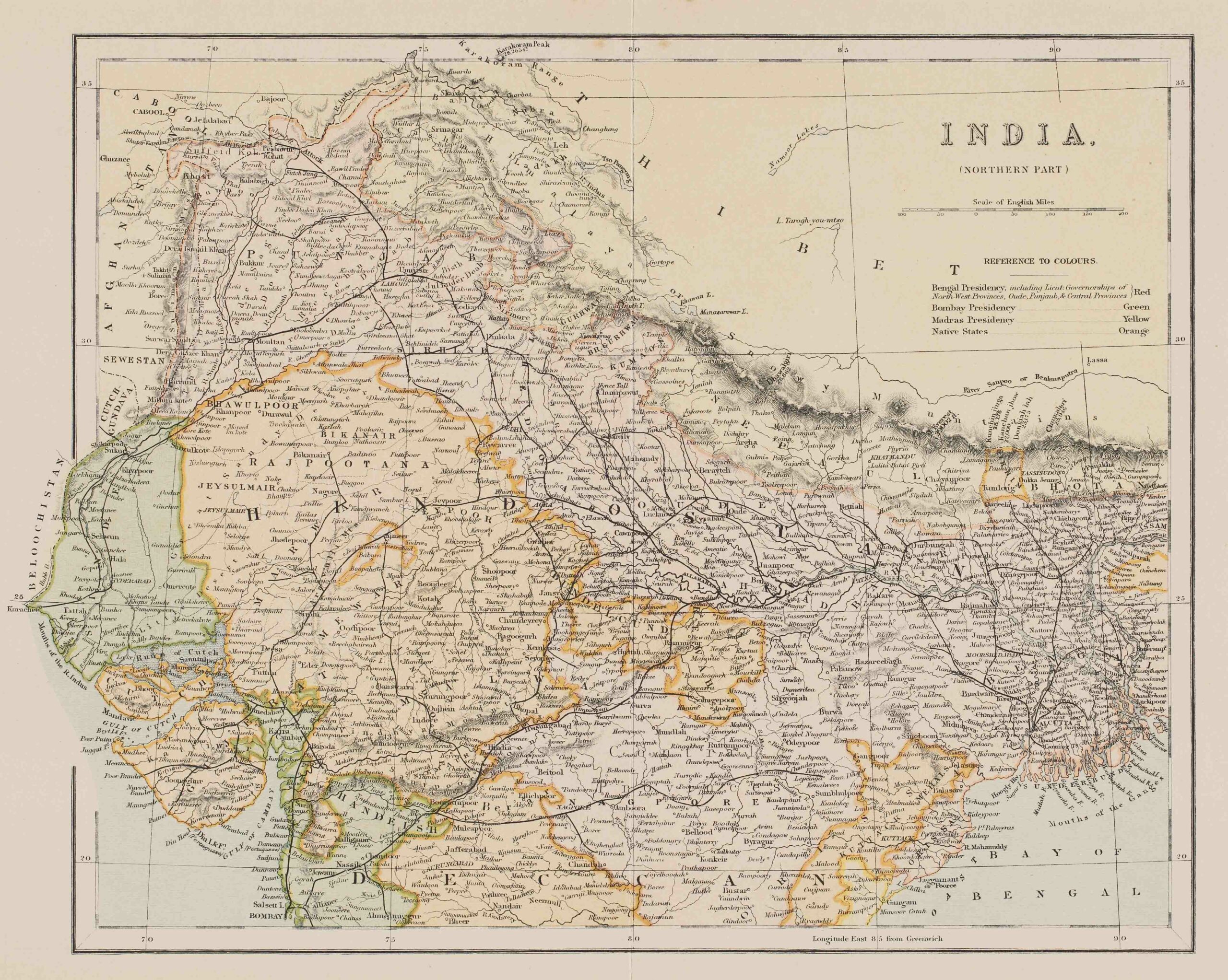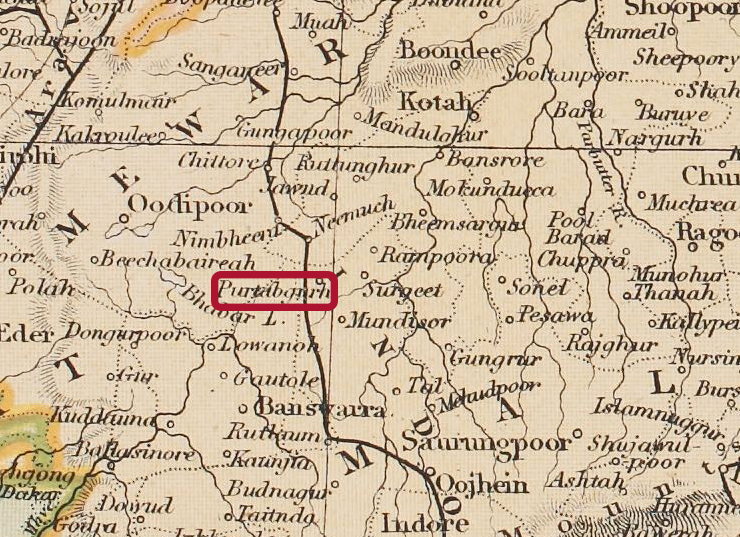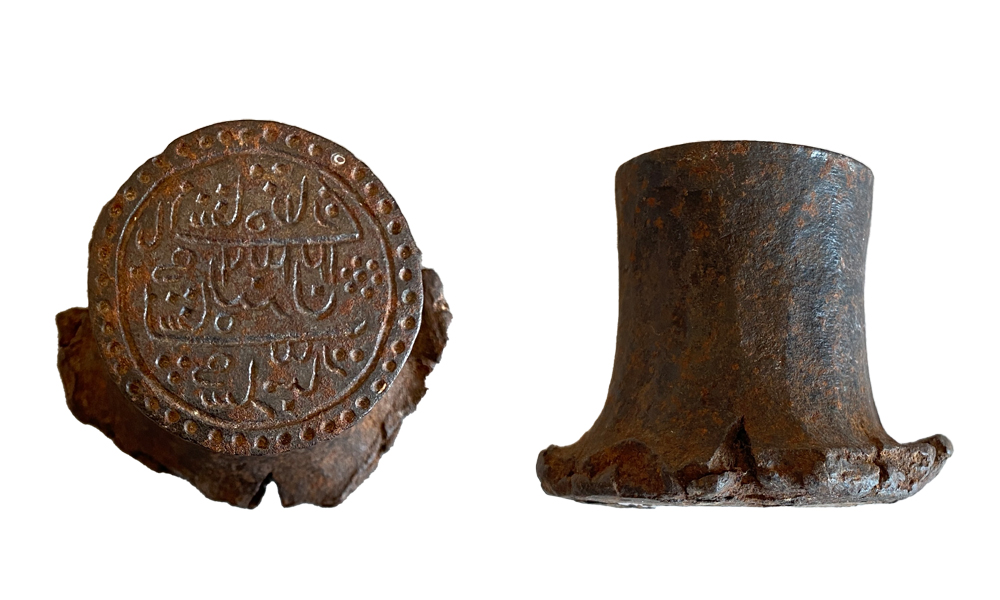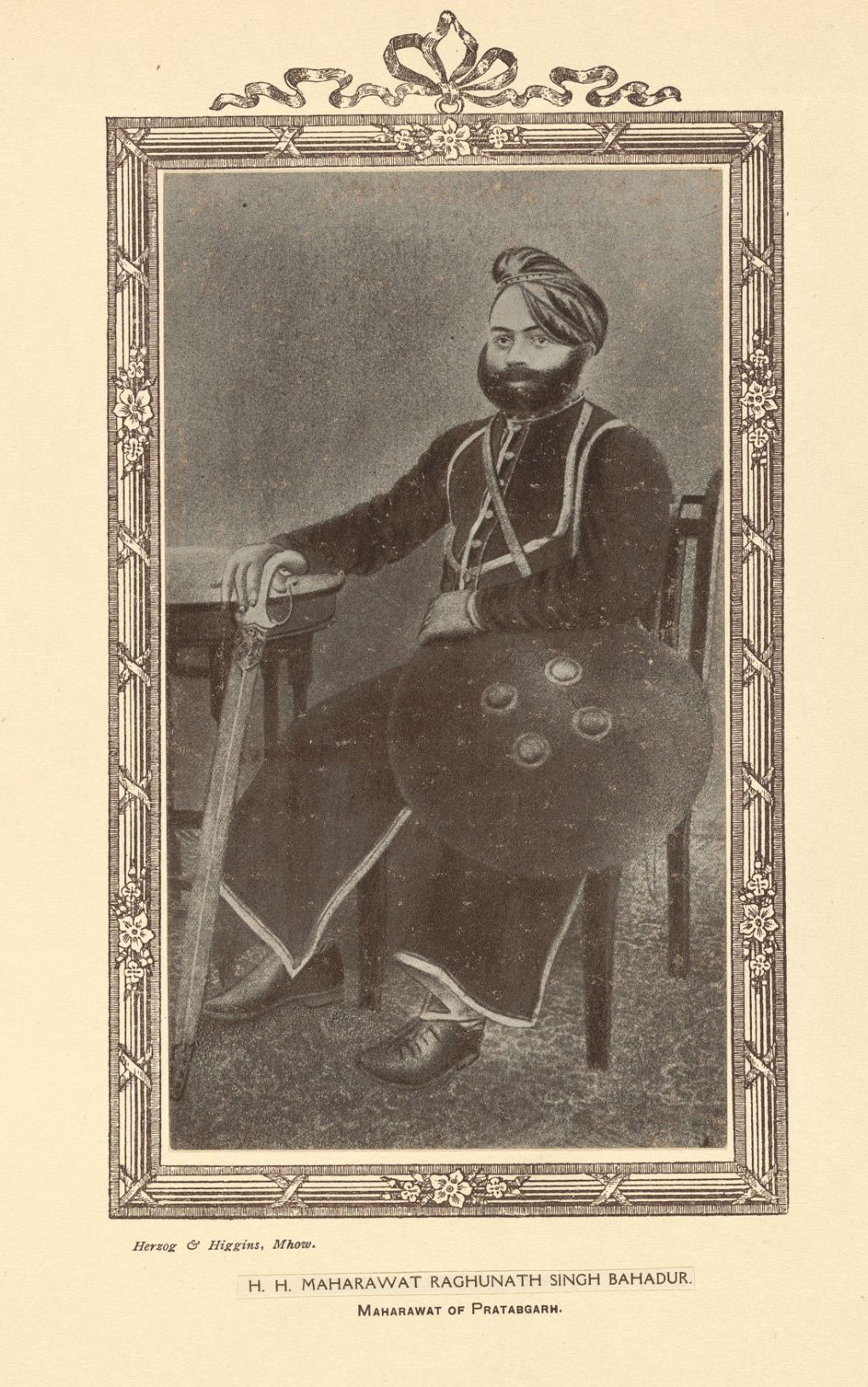
Map of India (northern part), 18th Century © Sarmaya Arts Foundation (2017.14.35 (1))

The princely state of Pratapgarh aka Pratabgarh is not easy to locate on an old map of Rajasthan. It’s overshadowed by celebrity neighbours like Udaipur and Jodhpur, as you can see on this 18th-century map. And it’s often confused with namesakes in Uttar Pradesh and Maharashtra. But some evidence still remains of the glory of this erstwhile Mewar kingdom. Part of it is contained in this piece of metal.

Udai Singh, Bronze anvil die of Nazarana 2-1/2 rupees, 1864-1890 CE © Sarmaya Arts Foundation
This is a bronze anvil die of a nazarana coin, issued by Maharawat Udai Singh of Pratapgarh. In Persian are inscribed the words: Sikka Mubarak, Shah-i-London, Badshah Ghazi. The coins made using this die were not meant to be circulated as currency; they were commissioned by one king to acknowledge the supremacy of another. In this case, the Maharawat of Pratapgarh was paying his respects to the “Shah-i-London” or the King of London, Edward VII.
After the Revolt of 1857, when the British Crown replaced the East India Company as the supreme authority in the region, many Indian states changed their coinage to reflect the new political reality. The pride of place occupied by the Mughal emperor on the face of coins was now ceded to British royalty. But the language—Persian—and the form of the big, beautiful nazarana coin remained constant, a distant echo of a fallen empire.
Udai Singh, who ruled Pratapgarh from 1864 to 1890, belonged to the royal family of Sisodia Rajputs. He was succeeded on the throne by Maharawat Raghunath Singh Bahadur, and the dynasty continued to enjoy good relations with the British Crown. This is apparent from a photograph of the latter in the Imperial Durbar Album of Indian Princes: Volume I, 1911 and the note that he was entitled to a 15-gun salute.

HH Maharawat Raghunath Singh Bahadur, Maharawat of Pratabgarh (Pratapgarh), ‘Imperial Durbar Album of Indian Princes: Volume I’, 1911 © Sarmaya Arts Foundation (2021.18.2 (33))
The coin die itself is so well-preserved probably because it wasn’t used extensively. Nazarana coins were meant to be presented at formal occasions, as tokens of allegiance. This one was likely used to mint just a few silver coins by hand. To imagine what the process of die-striking looked like, we have the words of art historian and numismatist Dr Charles Seltman:
“An artist or craftsman would carve an intaglio design on a thick disk of bronze; this was the obverse die which fitted into a pit sunk in the top face of an anvil. On the lower end of a square faced bronze punch the man next carved another intaglio design; this was the reverse die.
“In the little furnace, nearby, blank disks of silver, carefully adjusted to the correct weight, were heated to make them adequately malleable, and one by one these silver disks were placed with the aid of a pair of tongs upon the anvil over the sunk obverse die. Down upon each disk came the reverse die on the end of the square faced punch held in a man’s left hand. The hammer in his right hand smote several blows upon the upper end of the punch. The tongs pulled the silver disk away, for it was now a finished coin which required only to be refrigerated.”



